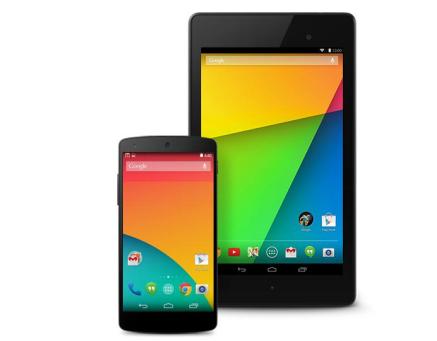Android KitKat undoubtedly brings all of Android’s state-of-the-art, elegant, and most useful features to more devices in all places. Android KitKat 4.4 arrives with all new features and looks which includes a new tool set to learn for mobile app developers and designers.
Google’s latest OS is designed to run smoothly and faster on a wider range of Android powered smartphones and tablets than ever before. This version also includes many low-end devices with 512MB RAM. Nexus 5 is the first one to come with the latest iteration of Android KitKat version 4.4.
Android 4.4 features a new set of APIs and tools that will help android app developers and designers create responsive, advanced and memory-efficient apps. This blog incorporates information about newly introduced features and APIs that developers need to look into and exploit.
New NFC capabilities
It has now become possible to carry out secure NFC-based transactions as the Android KitKat 4.4 introduces Host Card Emulation (HCE). With this new host-based card emulation method, developers can create an app that will emulate a card and talk directly to the NFC reader. A new ‘Reader Mode’ allows app to act as a reader for NFC-based transactions and HCE cards.
Wireless Printing
A native platform support for printing allows developers to make an app that lets users directly print most types of content either over Wi-Fi or through cloud-hosted services such as Google Cloud Print. The users can also change size of the paper, choose particular pages to print, and discover available printers to connect with. The new print API will definitely boost the concept of “mobile printing” which has been buzzing around the globe.
The printer manufacturers can use this API to develop a compatible app for their printers and make it available on Google Play.
Storage Access Framework
Accessing the documents and other media files has now become simpler than ever with a new storage access framework. KitKat allows users to browse various kinds of files through their preferred document storage providers, such as the device’s local storage, Google Drive, and other third-party.
Using the storage access framework, the developers can build a document provider for a cloud or local service. The users get instant access of the developer’s own storage services right after downloading the app. It enables users to manage, browse, read or write documents from various sources effortlessly.
Low-power Sensors
In order to reduce power consumption, this upgrade brings platform support for hardware sensor batching. The device hardware now collects and delivers sensor events efficiently in batches, which lets application processor stay in a low-power idle state. The integration of two new composite sensors – step detector and step counter – would be quite useful for developing apps for training and fitness purposes as the developers can access pedometer data without writing complex code and algorithms.
SMS Provider
Along with a shared SMS provider and new APIs, Android 4.4 KitKat introduces new semantics for receiving messages and writing to the provider. The new APIs give extra control to the developers to manage your app’s message storage and retrieval and also allow android app developers to route messages through the default messaging app. The latest android version enhances user experience with multiple messaging apps.
Full-screen Immersive Mode
Full Screen Immersive Mode makes overall experience “more engaging” allowing users to utilize the maximum area of the screen. Apps in Google’s latest operating system can now take expand to exploit every last pixel on the display screen of a device. Android app developers can choose to auto hide navigation bars and menu, buttons and other chrome that leads to the better user experience. This feature can radically benefit the developers while making media applications, for example, e-reader, Flipboard, and Pulse.
Transitions Framework for Animating Scenes
Using a new transitions framework, the developers can now animate between different pages or events within an app. The new framework lets developers create high-quality animations and define scenes in the app. It allows apps to present elegant fading effects, resizing, and other custom animations.
The inbuilt Transition Manager lets developers define the transition effectively between two consecutive scenes within an app.
Translucent System UI Styling
Using translucent system UI styling, the developers can use new window styles and themes that create the most impact out of the content. The refined gradients are now displayed behind the system bars that will ensure that the user can clearly see navigation bar buttons and status bar information.
Enhanced Notification Access
The notification will be now presented in different manner to extract cleaner information. Listener services can access a notification’s actions as well as additional fields including text, icon, chronometer, progress, picture, and many others.
New WebView & Chromium Features
The new implementation of WebView based on Chromium holds better support, superior performance, and greater compatibility to build and display your web-based content. It supports CSS3, HTML5, and JavaScript that delivers dramatically improved performance.
Screen Recording
This is one of the most interesting updates in Android KitKat. It allows system apps to record the activities happening on the screen in high-quality MP4 format. Developers can now use this feature via adb shell. It is definitely a great way to create tutorials for the app.
Enhanced level of connectivity
Android KitKat version 4.4 update comes up with two new Bluetooth profiles – Bluetooth HID over GATT (HOGP) and Bluetooth MAP – that let apps support a wider range of low-power and media interactions. You can exchange messages with a nearby device using Bluetooth MAP profile whereas Bluetooth HID over GATT (HOGP) provides connectivity with low-power peripheral devices such as keyboard, mouse, and joysticks.
This update also supports for built-in IR blasters. Using the new API the developers can create app to remotely control nearby TVs, switches, tuners, and other electronic gadgets, given that the Android phone has infrared support.
Author Information:
Mehul works with Softweb Solutions Inc an awarding winning Mobile App Development Company, I love to share technology related articles on mobile, HTML5, UI/UX to share ideas on blog, views about latest technology.

